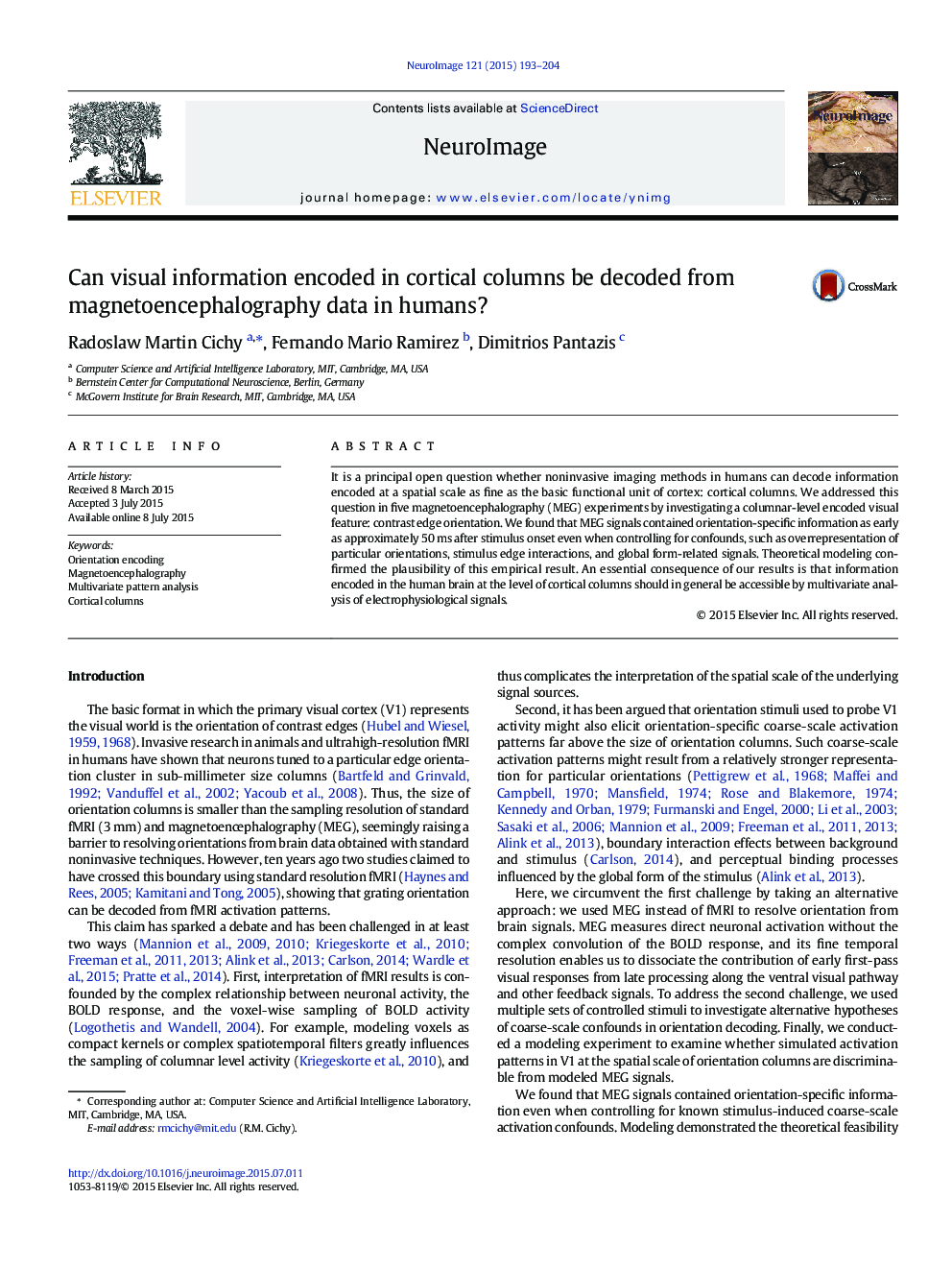| Article ID | Journal | Published Year | Pages | File Type |
|---|---|---|---|---|
| 6024782 | NeuroImage | 2015 | 12 Pages |
Abstract
It is a principal open question whether noninvasive imaging methods in humans can decode information encoded at a spatial scale as fine as the basic functional unit of cortex: cortical columns. We addressed this question in five magnetoencephalography (MEG) experiments by investigating a columnar-level encoded visual feature: contrast edge orientation. We found that MEG signals contained orientation-specific information as early as approximately 50Â ms after stimulus onset even when controlling for confounds, such as overrepresentation of particular orientations, stimulus edge interactions, and global form-related signals. Theoretical modeling confirmed the plausibility of this empirical result. An essential consequence of our results is that information encoded in the human brain at the level of cortical columns should in general be accessible by multivariate analysis of electrophysiological signals.
Related Topics
Life Sciences
Neuroscience
Cognitive Neuroscience
Authors
Radoslaw Martin Cichy, Fernando Mario Ramirez, Dimitrios Pantazis,
